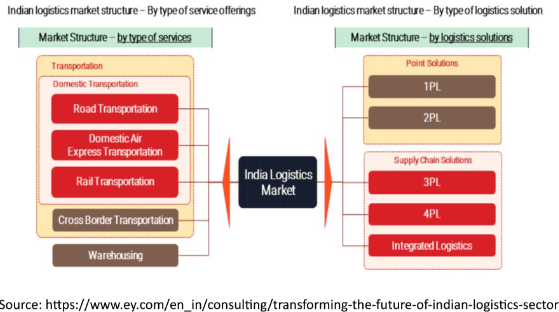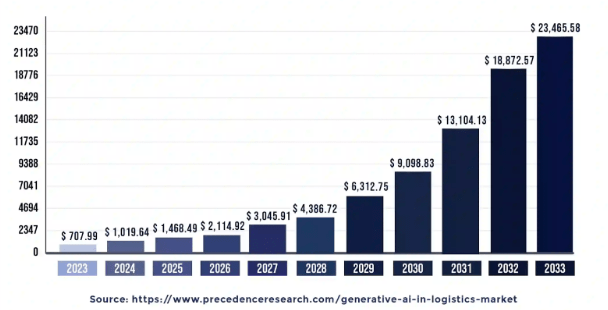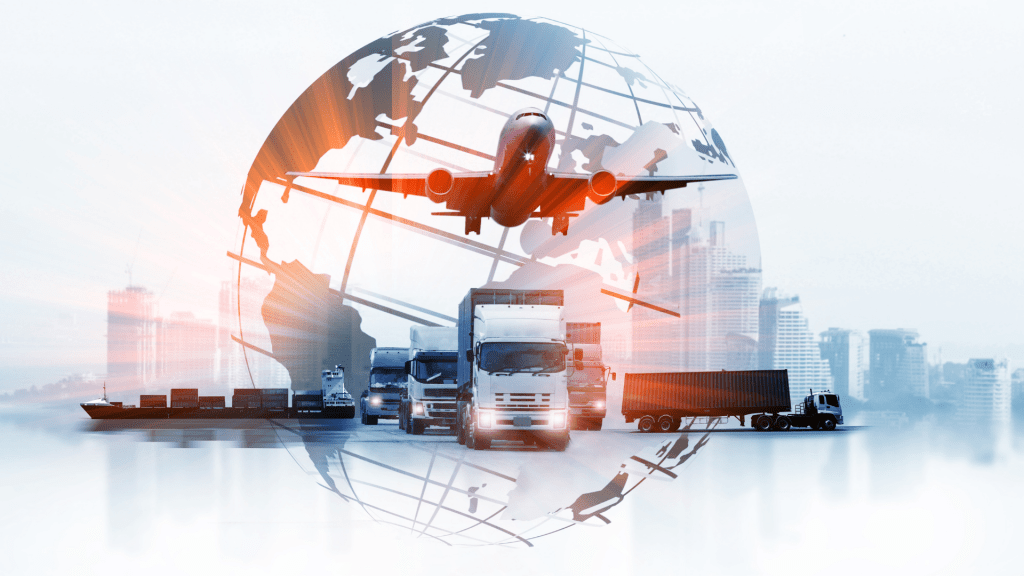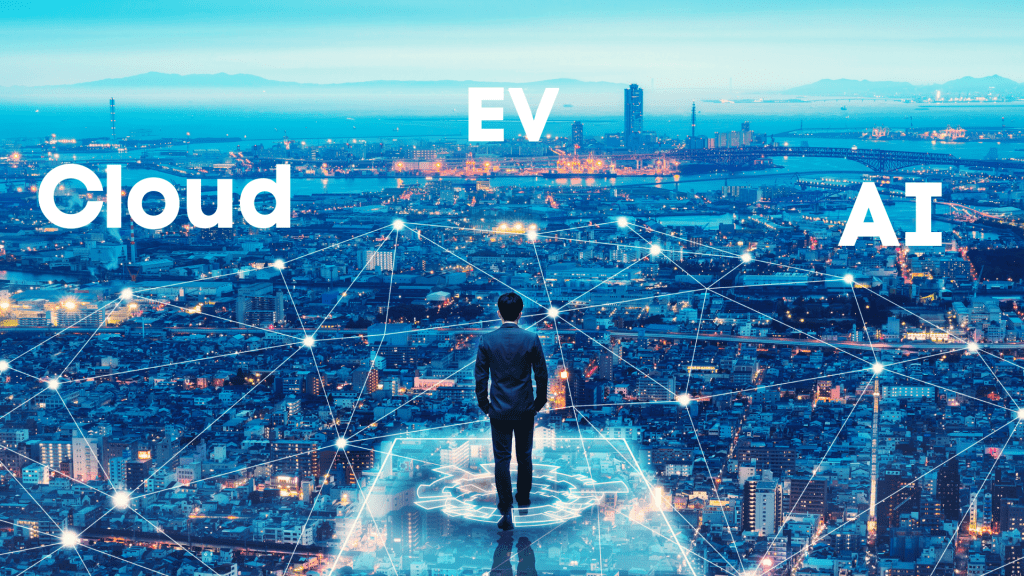The Indian logistics sector is currently on a phenomenal ride. Picture this: a young entrepreneur in Noida dispatches a hand-woven rug to a customer in California. In a matter of days, the rug travels seamlessly through a complex network of trucks, trains, and potentially even airplanes, before reaching its destination. This anecdote exemplifies the growing sophistication and reach of Indian logistics.
As per a recent report, the Indian logistics industry logistics market is estimated to grow at 8.8 percent annually to USD 484.43 billion by 2029 from USD 317.26 billion in 2024 due to technological advancement. Fueled by the booming e-commerce, quick commerce, and manufacturing sector, the logistics industry is experiencing a surge in growth.
Indian Logistics – A Quick Overview
India’s logistics industry is a major driver of the economy, contributing around 14% to GDP and employing over 22 million people. By 2025, the industry is expected to create even more jobs, with an estimated 1.2 million new positions.
The sectors with the industry include transportation, warehousing, and value-added services like packaging, labeling, and inventory management. In addition, a growing number of startups are bringing innovative technology to the industry to improve efficiency. Currently, the logistics sector is fragmented, with as many as 1000 active players.
Segments within Indian Logistics Industry
The various segments within the logistics industry based on the type of services are
- Road,
- Rail,
- Water
- Air
Logistics solutions can also be categorised by the level of service/solutions they provide:
Point Solutions
First Party Logistics (1PL): No intermediaries between enterprise and customers. The goods are delivered directly.
Second Party Logistics (2PL): Outsourcing a particular task like distribution or loading.
Supply Chain Solutions
Third-Party Logistics (3PL): Transportation, warehousing, and other services are provided by third party
Fourth Party Logistics (4PL): Use of technology to manage and optimise all aspects of a client’s supply chain.
Integrated Logistics: Combination of 3PL, 4PL, and all other value-added services to address strategic challenges across the entire supply chain.

The Indian logistics industry is on a transformative growth trajectory. After a severe decline of the industry during the covid times, it is on a robust rebound and now seen as one of the major catalysts to make India a $7 trillion economy by 2030.
Amongst the sectors in the logistics industry the warehouse sector and the transportation sector is witnessing significant growth. As per IBEF the Indian warehousing market is predicted to reach US$ 34.99 billion (Rs. 2,872.10 billion), expanding at a CAGR of 15.64% from 2022 to 2027. The warehouse sector has witnessed massive investments from global investors.
Major drivers of logistics industry growth
E-commerce Growth: The e-commerce sector in India is growing rapidly, and this is creating a huge demand for efficient last-mile delivery services. Logistics companies are investing in technology and infrastructure to meet the needs of e-commerce businesses, which is further driving growth in the sector.
Boost in domestic production and exports: India is increasingly seen as a viable alternative to China in global manufacturing. This shift has led to a rise in domestic production, creating a demand for efficient logistics to move goods within the country
Government initiatives: The Indian government is actively supporting the development of the logistics industry through initiatives like the Bharatmala Pariyojana (highway development project), dedicated freight corridors, PM GatiShakti, eway bill, National Logistics Policy 2022 etc.
Q commerce Boom: Q-commerce thrives on frequent, smaller orders compared to traditional e-commerce. This translates to a significant increase in the total number of deliveries handled by logistics companies.
Increase in D2C brands: The rise of D2C (direct-to-consumer) brands in India is acting as a significant growth catalyst for the logistics industry. These brands, bypassing traditional retail channels, rely heavily on efficient delivery networks to reach their customers directly. This surge in D2C shipments translates to a higher volume of deliveries for logistics companies.
Urbanisation, growing middle-class segment, and technological advancements have also contributed to the growth of the logistics industry in India.
Logitech – Integration of technology in logistics
Logitech startups are revolutionising the logistics industry by leveraging technology to improve efficiency, transparency, and customer experience. Recently, logitech startup “Porter” became India’s third unicorn this year. An on-demand marketplace for trucks, bikes and packers and movers, Porter is one of the leading startups in the Logitech space.
Startups in this space are using technology to improve operational efficiency, cut costs, and improve customer experience. Earlier when automation software on logistics had to be imported, these days, technological solutions to improve logistic operations are developed in India. According to recent research GenAI logistics market will grow from $412 million to an astonishing $13,948 million by 2032, showcasing an astounding 43.5% CAGR.

In fact, Logitech startups are revolutionising the logistics industry. These startups are innovating across various aspects of logistics, including:
- Supply Chain Management: Optimising inventory levels, forecasting demand, and streamlining transportation processes.
- Warehouse Management: Utilising automation and data analytics to improve warehouse operations and picking and packing efficiency.
- Last-Mile Delivery: Providing faster, more affordable, and convenient delivery solutions, especially in urban areas.
- Freight Management: Matching shippers with carriers to optimise truck utilisation and reduce empty miles.
Some of the notable startups in this sector are
- Delhivery
- Ecom Express
- Rivigo
- BlackBuck
- XpressBees
- Shiprocket
- Porter
- Locus
- Motive
- Intugine
Future Trends: Embracing Technology and Sustainability
Some of the key trends shaping the Indian logistics industry are
Technological Transformation: Artificial Intelligence (AI), Machine Learning (ML), and the Internet of Things (IoT) will revolutionise logistics. AI-powered route optimization, real-time tracking systems, and automated warehouses will enhance efficiency and delivery speeds.
Focus on Sustainability: Environmental consciousness is gaining traction. Logistics companies are adopting eco-friendly practices like electric vehicles, green packaging, and better waste management to reduce their carbon footprint.
Multimodal Transportation: Overdependence on road transport (currently handling 66% of cargo movement) is being addressed. A multi-modal approach utilising waterways, railways, and airways will ensure efficient and cost-effective freight movement.
Rise of Asset light logistics: Going forward this is a trend that will catch on. Focussing more on customer experience, many companies are opting for asset-light logistics thus concentrating on managing the operations. Already 67.5% of global companies opt for 3PL and an additional 63% opt for third-party warehousing.
Job Creation: A Promising Employment Landscape
The growth of the logistics sector will create a multitude of job opportunities across various segments. As per a report the growth of the logistics industry will create 10 mn jobs in India by 2027.
- Skilled Professionals: There will be a growing demand for professionals with expertise in data analytics, automation, AI, and supply chain management. These roles will require a blend of technical knowledge and business acumen.
- Logistics Specialists: The need for logistics specialists like warehouse managers, freight forwarders, and transportation planners will continue to rise. These professionals will be responsible for ensuring the smooth flow of goods across the supply chain.
- Delivery and Warehouse Personnel: The e-commerce boom will create a significant demand for delivery personnel, pickers, packers, and warehouse workers. Training programs will be crucial to equip this workforce with the necessary skills.
Despite the promising outlook, the Indian logistics sector faces certain challenges. Fragmented market, regulations, infrastructure bottlenecks, and skill gaps are the major challenges. However, government initiatives, industry collaborations, and a focus on skill development are paving the way for a more robust and efficient logistics ecosystem.
PeopleLogic Opinion
The Indian logistics industry stands at the cusp of an exciting transformation. Driven by e-commerce, manufacturing growth, and technological advancements, the sector is poised for significant expansion in the coming years. This growth will not only strengthen the Indian economy but also create a multitude of job opportunities for a diverse workforce.
The meteoric rise of the logistics sector translates to a flourishing job market, but with this growth comes the critical challenge of finding the right talent to navigate the complexities of the modern supply chain. This is where PeopleLogic one of the top recruitment agencies in India, steps in, acting as a bridge between qualified professionals and the dynamic world of logistics.Our team of logistics recruiters possesses in-depth knowledge of the industry and can leverage their network to identify qualified candidates with the specific skill sets and experience required to navigate the complexities of the modern supply chain. This ensures companies find the right talent to optimise operations, capitalise on growth opportunities, and stay ahead of the curve in this dynamic sector






